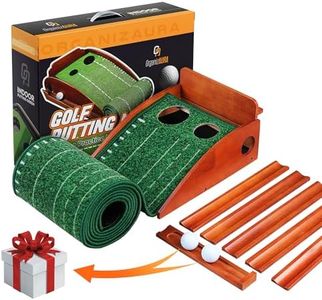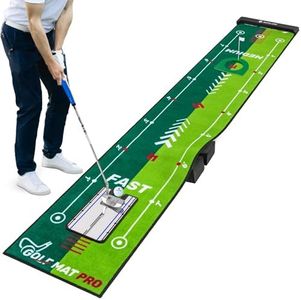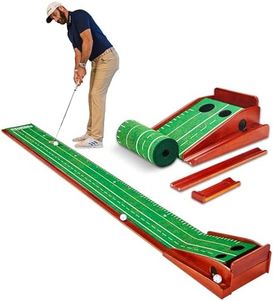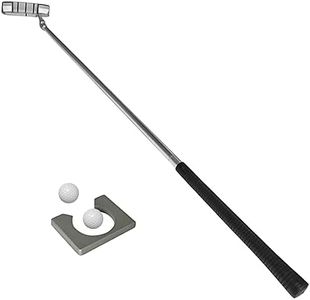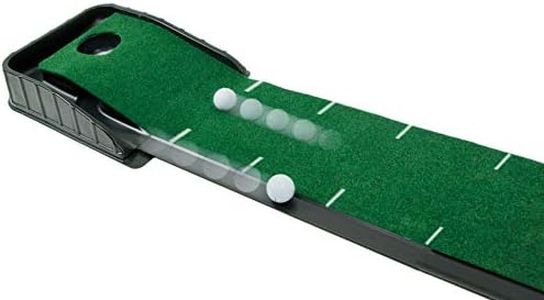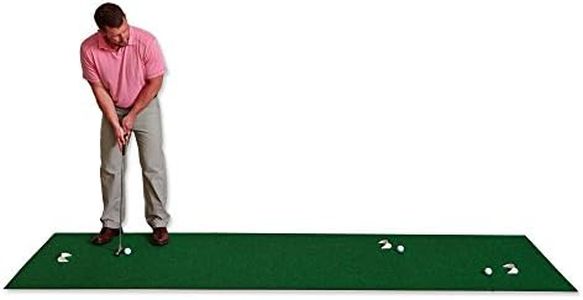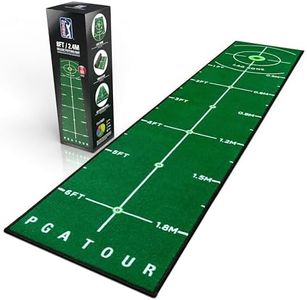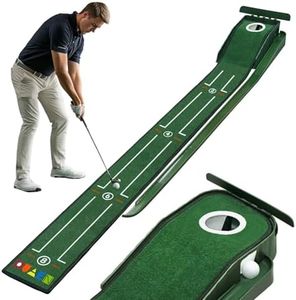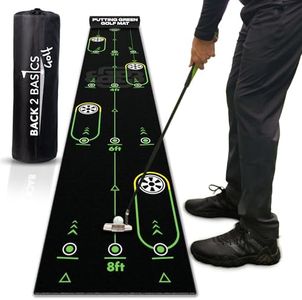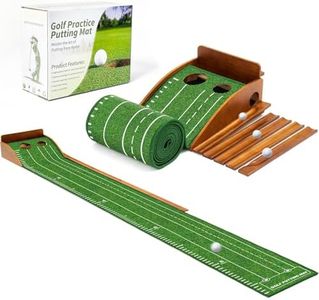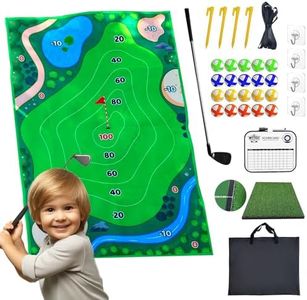We Use CookiesWe use cookies to enhance the security, performance,
functionality and for analytical and promotional activities. By continuing to browse this site you
are agreeing to our privacy policy
10 Best Golf Putting Sets
From leading brands and best sellers available on the web.Buying Guide for the Best Golf Putting Sets
Choosing a golf putting set can make practicing your short game much more convenient, whether at home, in the office, or on the go. The best putting set for you will depend on where you use it, how often you practice, and your skill level. Before making a purchase, it's helpful to consider the size of the set, the type of mat, included accessories, and portability, as each of these factors will affect your overall experience and practice effectiveness.Mat Quality and SurfaceThe mat is the main surface you’ll be putting on, and its quality is crucial for a realistic practice experience. Mats can range from basic felt or carpet to high-quality synthetic turf designed to mimic real grass. Lower-end mats may roll uneven or wear out quickly, while higher-quality surfaces provide a more consistent roll and feel similar to an actual green. If you’re just starting, a simpler mat may be enough for casual practice, but if you’re aiming to closely replicate course conditions or improve your precision, opt for a more realistic, thicker, or heavier-duty mat.
Length and Width of the MatThe size of the mat determines how much space you need and the types of putts you can practice. Shorter mats, around 6-8 feet, are easy to fit in most rooms and are great for focusing on short, straight putts. Longer mats, stretching 10-15 feet or more, allow for a wider variety of putt distances and angles, which is more suited to advanced practice. Choose the size based on the space you have available and the kind of practice you want—shorter, narrower mats for portability and smaller spaces; longer, wider mats if you have the room and want to practice a greater range.
Incline and Ball Return FeaturesSome putting sets include an elevated hole or built-in incline, which can help you develop a firmer putting stroke and improve distance control. Ball return features automatically send the ball back to you, reducing time spent retrieving balls and making practice more efficient. Basic sets may not have these, while others include both for convenience. Decide if you value the realism of a flat green or want the added challenge and speed of an incline. Ball return can be particularly helpful if you plan on practicing often or for long sessions.
Number and Style of HolesDifferent sets offer various hole setups, from a single target to multiple holes with varying sizes or shapes. Extra holes simulate different challenges, such as smaller cups for accuracy training. Beginners might stick with standard-size holes to build basic confidence, while intermediate or advanced users may want more variety or difficulty. Consider the number and layout of holes based on your skill level and the types of putting skills you aim to develop.
Portability and StorageIf you want to use your putting set in multiple locations or need to store it away after use, portability is vital. Lightweight, foldable mats with compact carrying cases are easy to move and store. Heavier, permanent-style mats are better suited to dedicated spaces but are less convenient for travel or storage. Assess how and where you'll use the set—choose a portable version for versatility or a sturdier design for frequent, stationary use.
Included AccessoriesGolf putting sets can come with various extras such as putters, golf balls, alignment aids, or cup flags. Some sets are just the mat and hole, while others are complete kits. Beginners or those without their own equipment might prefer a full set, whereas more advanced players who have their own gear can focus on the mat itself. Think about what you already own and what additional features would add value to your practice sessions.

